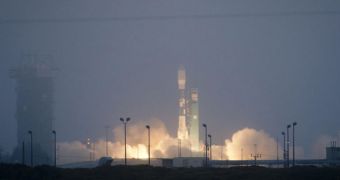Yesterday, at 7:20 am PDT (1420 GMT), the newest ocean salinity-monitoring spacecraft launched to Earth's orbit from California, the United States. The mission will spend three years figuring out the planet's water cycles, as well as the most complex interactions between the atmosphere and the oceans.
The platform vehicle is called Satélite de Aplicaciones Científicas-D (SAC-D) and was built by the Comision Nacional de Actividades Espaciales (CONAE), the Argentine space agency.
The main instrument aboard the satellite, called Aquarius, was developed by experts at the NASA Jet Propulsion Laboratory (JPL), in Pasadena, California, and the NASA Goddard Space Flight Center (GSFC), in Greenbelt, Maryland.
SAC-D/Aquarius is a joint, NASA-CONAE mission, whose goal is to monitor ocean salinity across the globe. This will provide scientists with the data they need to understand the planet's water cycle.
Ultimately, studying salinity could lead to the development of more advanced computer models for deciphering how Earth's climate will evolve over time. Given that global warming is taking place even now, gaining this ability is even more urgent than ever.
The spacecraft took off on June 10, aboard a Delta 2 delivery system, from the Vandenberg Air Force Base (VAFB), in California. Originally, the flight was supposed to launch on June 9, but a series of faults forced mission controllers to delay the event by 24 hours.
“In this mission, NASA is really ready to take an important science and technological leap forward,” said during a June 7 prelaunch briefing Gary Lagerloef, the principal science investigator for the Aquarius instrument. He is based at the Earth and Space Research in Seattle.
“The addition of Aquarius to this suite of instruments helps create a more complete picture of our oceans and the impact on the Earth's climate,” explains NASA Headquarters Science Mission Directorate (SMD) program executive Eric Ianson, quoted by Space.
SAC-D has been inserted into a polar orbit that keeps it at a constant altitude of 408 miles (657 kilometers). For the next three months, it will undergo testing and commissioning, and then the $400 million spacecraft will finally begin its three-year research.
“This is obviously a great day – a great day for Argentina and CONAE, a great day for the US and NASA and a great day for all of our other international collaborators on this mission. And it's a great day for science,” NASA Earth Science Division director Michael Freilich said after the launch.

 14 DAY TRIAL //
14 DAY TRIAL //